#Virtual Reality Service
Explore tagged Tumblr posts
Text

Step into a new dimension of immersive experiences with our virtual reality company in Switzerland. Pioneering innovation and cutting-edge technology, we redefine reality through VR solutions. Elevate your senses and explore limitless possibilities. Connect with us to embark on a virtual journey like never before.
#virtual reality#best virtual reality company in Switzerland#virtual reality companies#virtual reality company#best virtual reality company#Virtual Reality Service#vr development#vr development company
0 notes
Text
Immersive Learning: The Power of VR in Training - Atcuality
At Atcuality, we believe that learning should be as dynamic as the challenges you face. That’s why our VR-based training solutions are transforming how individuals and teams acquire new skills. With VR, we simulate real-life environments, enabling learners to practice, adapt, and succeed without the consequences of real-world mistakes. Our solutions are cost-effective, scalable, and highly engaging, making them ideal for industries like healthcare, construction, and corporate training. Experience the unmatched advantages of immersive technology and give your team the tools they need to excel. Step into the future of education with Atcuality.
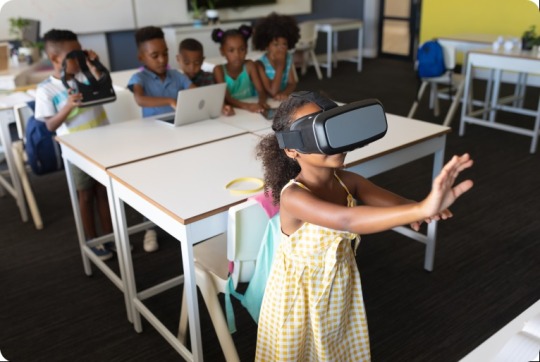
#seo services#seo marketing#artificial intelligence#seo company#seo agency#ai powered application#digital marketing#azure cloud services#iot applications#amazon web services#augmented human c4 621#augmented reality agency#augmented and virtual reality market#augmented intelligence#augmented reality#ai applications#ai app development#ai generated#technology#virtual reality#digital services#web development#web design#web developers#web developing company#website development#cash collection application#blockchain#metaverse#wordpress
2 notes
·
View notes
Text

BIM Careers: Building Your Future in the Digital AEC Arena
The construction industry is undergoing a digital revolution, and BIM (Building Information Modeling) is at the forefront. It's no longer just a fancy 3D modeling tool; BIM is a collaborative platform that integrates data-rich models with workflows across the entire building lifecycle. This translates to exciting career opportunities for those who can harness the power of BIM.
Are you ready to step into the octagon of the digital construction arena? (Yes, we're keeping the fighting metaphor alive!) Here's a breakdown of the in-demand skills, salary ranges, and future prospects for BIM professionals:
The In-Demand Skillset: Your BIM Arsenal
Think of your BIM skills as your tools in the digital construction toolbox. Here are the top weapons you'll need:
BIM Software Proficiency: Mastering software like Revit, ArchiCAD, or Navisworks is crucial. Understanding their functionalities allows you to create, manipulate, and analyze BIM models.
Building Science Fundamentals: A solid grasp of architectural, structural, and MEP (mechanical, electrical, and plumbing) principles is essential for creating BIM models that reflect real-world construction realities.
Collaboration & Communication: BIM thrives on teamwork. The ability to collaborate effectively with architects, engineers, and other stakeholders is paramount.
Data Management & Analysis: BIM models are data-rich. Being adept at data extraction, analysis, and interpretation unlocks the true potential of BIM for informed decision-making.
Problem-Solving & Critical Thinking: BIM projects are complex. The ability to identify and solve problems creatively, while thinking critically about the design and construction process, is invaluable.
Salary Showdown: The BIM Payday Punch
Now, let's talk about the real knock-out factor – salaries! According to Indeed, BIM professionals in the US can expect an average annual salary of around $85,000. This number can vary depending on experience, location, and specific BIM expertise. Entry-level BIM roles might start around $60,000, while BIM Managers and BIM Specialists with extensive experience can command salaries exceeding $100,000.
Future Forecast: A Bright BIM Horizon
The future of BIM is bright. The global BIM market is projected to reach a staggering $8.8 billion by 2025 (Grand View Research). This translates to a continuous rise in demand for skilled BIM professionals. Here are some exciting trends shaping the future of BIM careers:
BIM for Specialty Trades: BIM is no longer just for architects and engineers. We'll see increased adoption by specialty trades like HVAC technicians and fire protection specialists.
Integration with AI and Machine Learning: Imagine BIM models that can predict potential issues or suggest optimal design solutions. AI and machine learning will revolutionize BIM capabilities.
VR and AR for Enhanced Collaboration: Virtual Reality (VR) and Augmented Reality (AR) will allow for immersive BIM model walkthroughs, facilitating better collaboration and design communication.
Ready to Join the BIM Revolution?
The BIM landscape offers a dynamic and rewarding career path for those with the right skills. If you're passionate about technology, construction, and shaping the future of the built environment, then BIM might be your perfect career match. So, hone your skills, embrace the digital revolution, and step into the exciting world of BIM with Capstone Engineering!
#tumblr blogs#bim#careers#buildings#bim consulting services#bim consultants#construction#aec#architecture#3d modeling#bim coordination#consulting#3d model#bimclashdetectionservices#engineering#MEP engineers#building information modeling#oil and gas#manufacturing#virtual reality#collaboration#bim services#uaejobs
2 notes
·
View notes
Text

AR or Augmented Reality and VR or Virtual Reality are the technical inventions that help live our imaginations before our eyes through simulations. AR/VR can be programmed with IoT objects to offer optimal audio-visual experiences that can rival or replicate a physical world without the help of any tangible media.
But, how to program these elements?
The popular programming languages help you build the simulations that bring AR/VR tech to life for the audience. Languages like C#, Python, JavaScript, JAVA, Swift, C++, Rust, and APIs like WebGL allow developers to build the right AR/VR for the users.
Are you willing to build AR/VR tech for your business? Hire Augmented Reality Developers or Virtual Reality Developers via Remote72.
#ar vr technology#augmented reality#virtual reality#app development#developer#programming#software engineering#software#ar vr development services#python#java#javascript#webgl#developers#iot#iot tech#internetofthings#technology#tech
2 notes
·
View notes
Text
#theintellify#mobile application development#web application development#cloud consulting services#augmented reality#virtual reality#ar vr technology#arvr#ar vr development company#ar vr development services
2 notes
·
View notes
Text


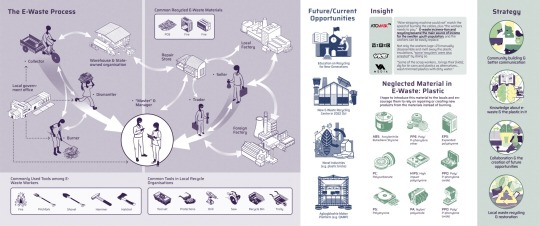


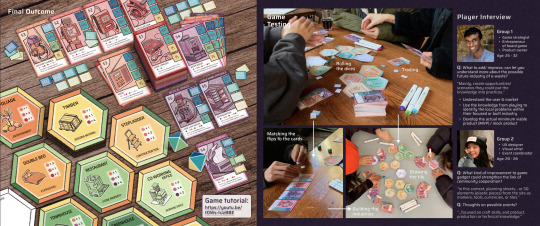


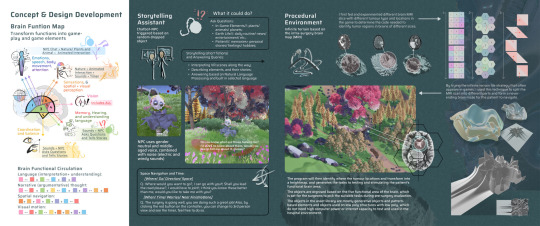

Pp 1-10
Pp 11-17
Pp 18-21
#design#graphics net#boardgames#virtual reality#neurotechnology#environment#ecology#humanity#entreprenuership#brand strategy#uiuxcreative#ux desgin#ui ux development services#service#technology#student#portfolio#business strategy#community#graphic design#card design#illustration#illustrator#designer#product design#corporate strategy#ui ux design#science#local governments#localization
14 notes
·
View notes
Text
#Architectural Visualisation & 3D Rendering Services#Property Marketing Services#Interactive and Virtual Reality Services
2 notes
·
View notes
Text
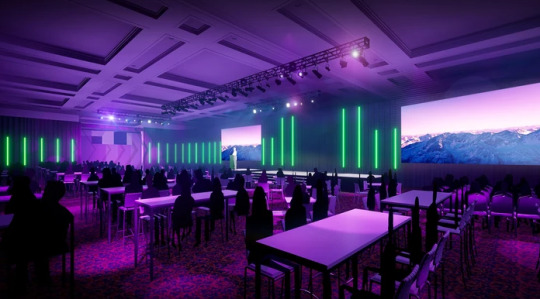
From concept to execution, our team at Pulse Studio will help bring your event to life with our physical event design services. Our expert designers and planners will work with you to create an unforgettable experience for your guests, with custom staging, lighting, and decor that reflects your unique vision.
#Corporate Theatre Desgin#Physical Event Design Services#Virtual Reality Experiences#Hybrid Event Design Services#VR Rental Games#metaverse rentable event space
2 notes
·
View notes
Text
I'm so frustrated by the lack of response to the mass psychogenic illness of law enforcement officials claiming to suffer contact fentanyl poisoning. There were a few studies done that quietly concluded that it's not real, none of the cases were credible, and the symptoms most closely resemble a panic attack or somatic episode.
No one is connecting this to systemic issues in police training and culture and no one is treating this as the canary in the coal mine it is.
Modern police training is functionally cult indoctrination, and intentionally cultivates paranoia. Police learn that everyone is out to get them, danger lurks around every corner, and their only job is to make it home alive after their shift.
They then enter the body of police culture, where questioning the bad behavior of fellow officers is at best strictly socially punished and at worst can get them killed, where they are constantly vigilant to say the right things and portray the right beliefs.
Suddenly, after generations of mainstream culture being generally supportive of police, in the midst of an anxiety-riddled pandemic, there is a highly-publicized backlash against law enforcement. Regular people are saying ACAB, calling cops fascists and murderers and wife-beaters. They're posting officers' service records on social media. Police, unwilling to believe they are evil, experience a cognitive dissonance backlash effect and cling to beliefs that contradict reality.
No one should be shocked - and no one should be hesitant to say - that there is a mental health crisis in law enforcement. They are paranoid, hyper-vigilant, and mired in cognitive dissonance. They have guns and virtually unchecked power to enact violence in their communities. Making up delusional stories about fentanyl is a pretty mild outcome compared to what we should be expecting from these circumstances.
Police aren't just bastards. They're a danger to themselves and others.
26K notes
·
View notes
Text
MemeMagic: Weaving Spells with the Threads of Viral Culture
The digital realm thrums with a symphony of information, a cacophony of images, words, and sounds that weave a tapestry of human experience. Within this swirling vortex of data, a new form of magic is taking shape – the magic of memes. These seemingly innocuous cultural artifacts, often dismissed as mere entertainment or fleeting trends, possess a hidden power, a potent ability to influence the…
#.Magic#artificial intelligence (AI)#augmented reality (AR)#Books#magickal work#Products#Services#technology magick#technomancy#virtual reality (VR)
0 notes
Text
🌟 Master the Art of Product Marketing 🌟
Ever wonder what makes a product truly successful? 🤔 Dive into our latest blog post to explore the essential concepts of product marketing that can transform your strategy!
✨ Here’s what you’ll discover: ✅ How to position your product for success 🎯 ✅ Strategies to connect with your ideal audience 🌍 ✅ Secrets to launching products that stand out 🚀 ✅ Real-world examples of marketing done right 🛍️
Whether you're a budding entrepreneur, a marketing enthusiast, or someone curious about the strategies behind great products, this post is packed with insights you can’t miss!
👉 Read it now: Product Marketing
Let’s talk product marketing! Reblog and share your thoughts with us. 💬

#product marketing#marketing tips#digital strategy#entreprenuership#business growth#tumblr community#digital marketing#marketing strategy#marketing strategies#products#4ps#4ps of marketing#8psofmarketing#productlaunch#product launches#types of products#product positioning#philip kotler#product levels#Levels of products#product lifecycle management#product life cycle#consumer products#industrial products#digital marketing services#digital marketing for beginners#virtual reality products#ar products#vr products#branded products
0 notes
Text
Create Impactful Digital Experiences with Augmented Reality Development Services
At Atcuality, we believe in the power of augmented reality to transform how users interact with brands. Our augmented reality development services provide businesses with innovative solutions that captivate audiences by blending digital and real-world elements. This immersive technology enables users to visualize products, explore environments, and experience services in a whole new way. Our experienced team of developers and designers work collaboratively with clients to deliver custom AR applications that align with specific business goals. By adopting AR, businesses can enhance customer engagement, increase interaction, and differentiate themselves in a crowded market. With Atcuality’s augmented reality development services, you can create digital experiences that leave a lasting impression, building stronger connections with your audience. Discover how AR can benefit your brand and redefine customer interaction with Atcuality's expertise at your service.
#iot applications#artificial intelligence#technology#digital marketing#seo marketing#seo#seo services#emailmarketing#search engine optimization#google ads#socialmediamarketing#augmented reality#augmented human c4 621#augmented and virtual reality market#blockchain#ai powered application#amazon web services#mobile app development company#mobile app developers#mobile application development#app developers#app development company#azure cloud services#cash collection application#cloud security services#iot app development services#task management solution
3 notes
·
View notes
Text
The metaverse is rapidly becoming a cornerstone of the digital future, and Simulanis, an Indian technology company, stands at the forefront of this transformation. As a pioneer in augmented reality (AR), virtual reality (VR), and mixed reality (MR), Simulanis is shaping the metaverse's integration into various industries. From education to healthcare, its innovative solutions are building immersive environments that redefine interaction, learning, and productivity For more information about metaverse development company , please visit the official Simulanis Solutions website: simulanis.com
#Metaverse companies in India#Indian metaverse startups#Virtual reality companies in India#Metaverse development India#AR VR companies in India#India metaverse solutions#India virtual space companies#Metaverse technology India#NFT companies in India#Virtual world startups India#Indian metaverse industry#Metaverse services India#Augmented reality companies India#Indian blockchain metaverse companies#Metaverse and blockchain India#VR development companies India#Metaverse apps in India#Metaverse innovation India#Virtual gaming companies India#Indian metaverse platform#Digital twin companies India#Metaverse partnerships India#Metaverse creators India#Virtual reality software India#Metaverse agency India#VR content creators India#Metaverse entertainment India#Indian digital experience companies#Metaverse investment India#XR technology companies India
1 note
·
View note
Text
Top Virtual Reality Service Company Transforming Industries in UAE

Nowadays industries all over the world are moving in the direction of adopting advanced technology such as Virtual Reality (VR) technologies to deliver high-quality service in terms of digital user experience and to be a part of the journey that is going in the direction to transform UAE. Industries like real estate, entertainment, hospitality, education, and gaming were using virtual reality services provided by top companies to improve customer engagement and user experience with the virtual world. VR has transformed complex fields like real estate by providing simplified solutions such as 3d virtual property tours, property viewing virtual tours, etc. Cities like Dubai are well known for their innovation in VR to transform many industries. So in this article, we are going to discuss how top companies are playing an important role in shaping the future of Dubai.
Virtual Reality Revolution in UAE
Due to the integration of virtual reality services in day-to-day business operations, many top VR companies in Dubai are working to offer innovative and result-oriented goals. For example, VR and AR in education have brought positive results in developing bright futures for students.
Impact of Virtual Reality on UAE Industries
Most of the industries in UAE have seen successful results by using virtual reality services. Below some points show how industries are using virtual reality services for their goals.
Real Estate: Most real estate companies are adopting virtual reality services provided by top companies like Abhiwan Technology which provides metaverse real estate solutions such as 360-degree virtual property tours, AR property viewing, interactive floor plans, interactive sales tools, and many more.
Healthcare: In the medical sector adopting VR services has improved performance by providing training in creating a virtual world based on real-time case scenarios it gives a possibility to explore the aspect where work can be done.
Education: Offering interactive learning experiences with the help of virtual reality helps the students explore things, experience real-world case experiences, and improve in imagination along creativity.
Tourism: Virtual Reality integration in the tourism sector provides virtual tours of real tourist places or any destination which boosts user engagement and increases tourism at that particular place. With the use of virtual reality person can also experience a personalized virtual tour for that location.
Real-World Case Study of Virtual Reality Services
Below are some points that show how all over the world virtual reality technology integration provides benefits to various industries or sectors you can go through it
Real Estate Sector: Redfin one of the famous real estate company has adopted virtual services such as 3D property tour which helps in increasing user interest in buying property along with improved return on investment. You can also get the advantages of virtual reality services by collaborating with top VR company like Abhiwan Technology.
Medical Sector and Health Sector: Johnson & Johnson company has adopted VR technology to provide virtual surgical operations so that complexity can be reduced in real-time. In the healthcare sector also we can use vr services to aware the patient about the disease which brings clear understanding. You can also get the advantages of vr service by collaborating with the best virtual reality services provider like Abhiwan Technology.
Education Sector: In India Sanik Girls school has adopted vr and ar in education, students are provided with 360-degree virtual tours of that location, which increases the level of understanding. You can also get the advantages of vr service by collaborating with the best virtual reality services provider like Abhiwan Technology.
Tourism Sector: First Airline is a Tokyo-based company that has implemented vr technology. This company is not an airline company but beyond this it is an entertainment service provider company, they provide the virtual experience of virtual traveling. You can also get the advantages of virtual reality services by collaborating with top VR company like Abhiwan Technology.
Conclusion: Accepting the Virtual Reality Future
Most industries have now accepted that adopting virtual reality services provided by top vr companies is very important to achieve success in various industries. Top virtual reality companies in Dubai are day by transforming VR services through innovation and providing high-quality result-oriented business solutions. Abhiwan Technology is one of the top virtual reality service company in the UAE. Contact Abhiwan Technology to take your business to the next level with enhanced business operation along result guaranteed high-quality services.
0 notes
Text
What is Virtual Retreat?

Like an in-person retreat, a virtual retreat is an online gathering designed to let remote or dispersed teams connect, relax, and focus on their goals. Team-building activities, seminars, wellness sessions, and brainstorming sessions are all part of virtual retreats, which are led using video conferencing and collaboration tools. They provide employees a break from their regular routines, encouraging relaxation, creativity, and cooperation. As remote work grows more prevalent, companies are using virtual holidays to maintain company culture, enhance team relationships, and keep employees motivated from a distance. This modern approach to vacations complements today's digital workplaces, bridging geographic gaps and fostering teamwork and morale.
Learn the benefits of virtual getaways for remote teams, including increased team morale, cooperation, and well-being. Discover how, in a digital workplace, virtual vacations may improve team cohesiveness and productivity. Continue reading- Team Building in The Digital Age Through Virtual Retreats
Visit HI Offsite to plan virtual retreat for your team!
#business meeting#virtual reality#offsite event planner#business trip#leadership program#incentive program#corporate event service provider in india
1 note
·
View note
Text
Do you want to present simulated environments for your users within a defined budget? Or learn more about the trends and technologies of virtual reality (VR) app development in 2025. If yes, then you on the right place. KPIS Pvt. Ltd. is the leading Virtual Reality (VR) app development company in India, to help your business with future-ready success with our customized solutions. Our team of VR app developers always integrates their expertise and hands-on experience for customized solutions. So, that you get market-focussed and best-in-class mobile and web applications. Moreover, we present customized VR development services that meet your business needs and customize solutions.
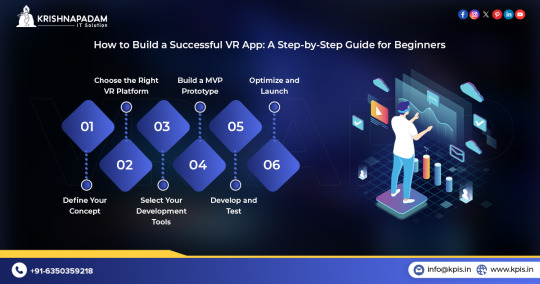
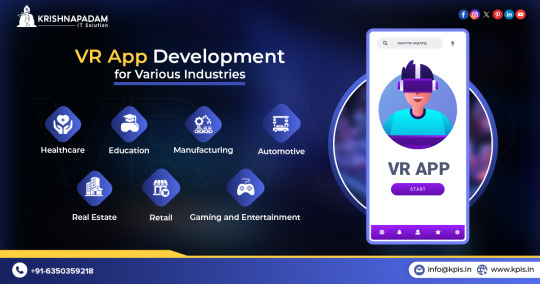

#VR#VR App#VR App Development Company#virtual reality#app development#web development#application development#game development company#technology#artificial intelligence#internet of things#game development#rummy game development#iot#VR Services#VR Development#vr games#vr headset#vr chat#AR VR App
0 notes